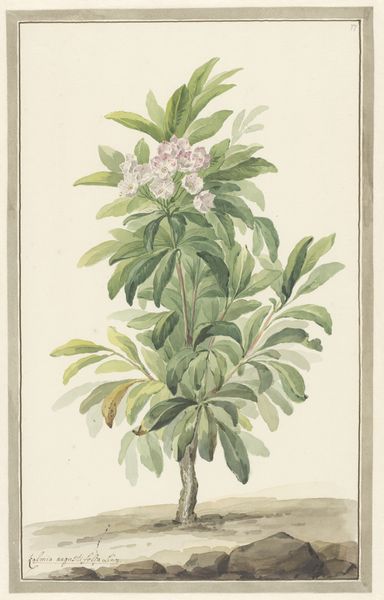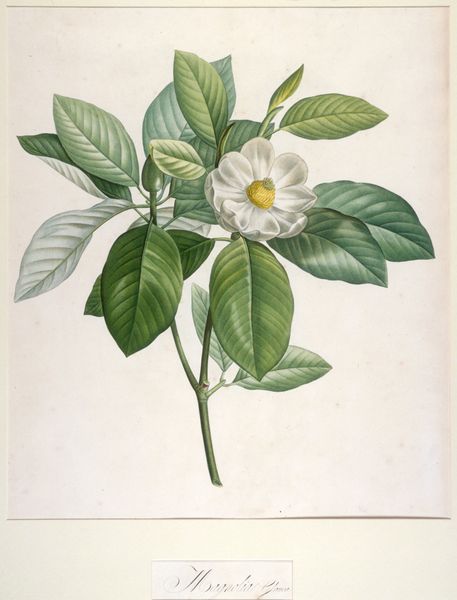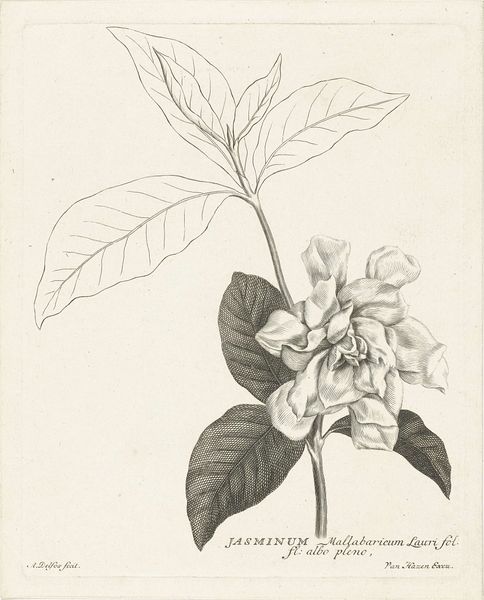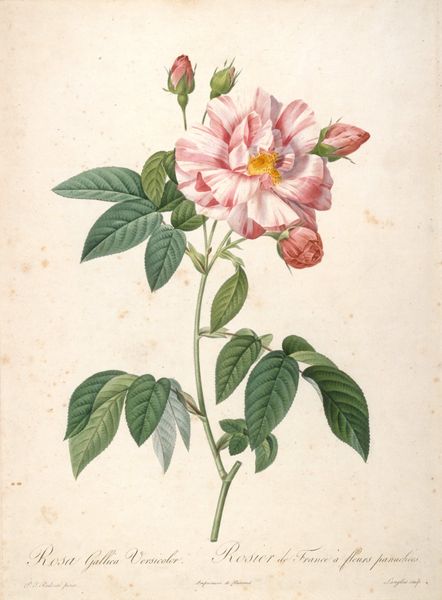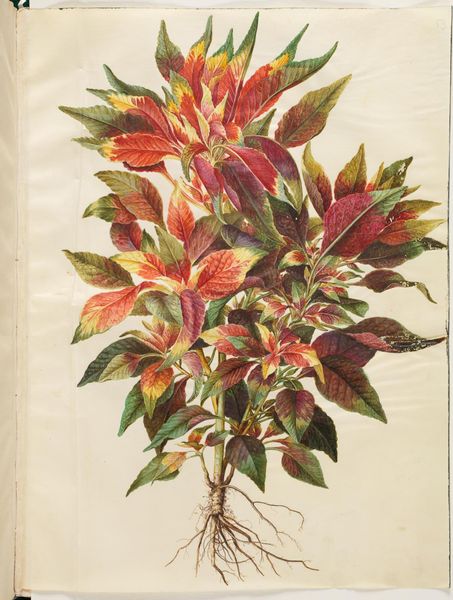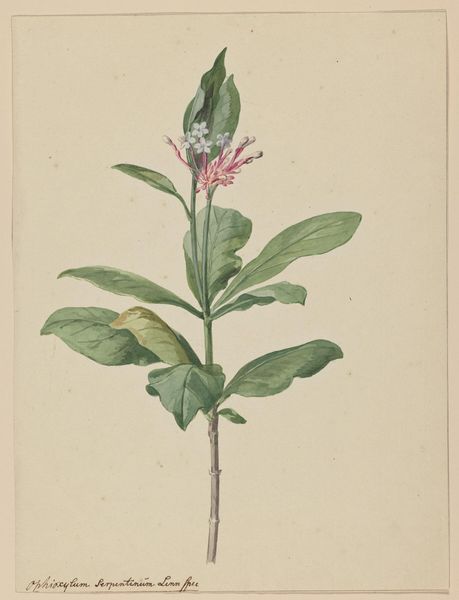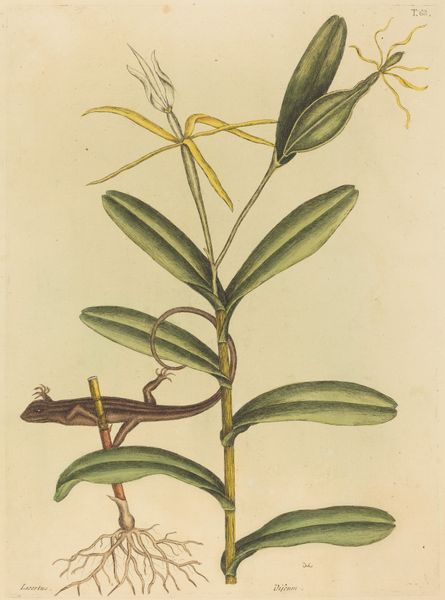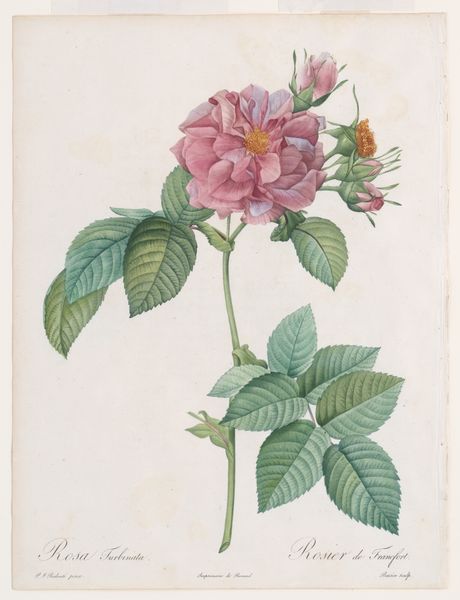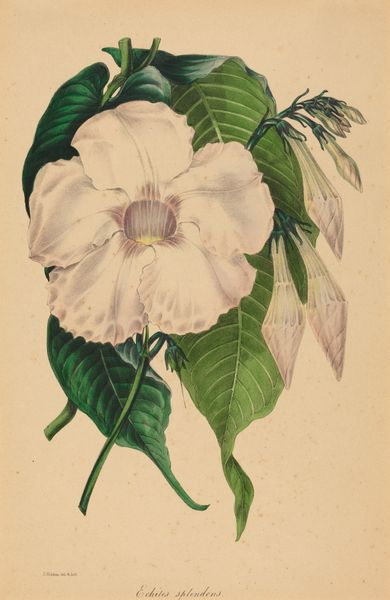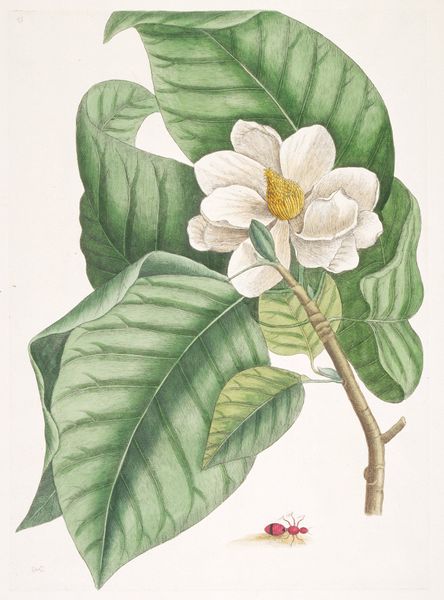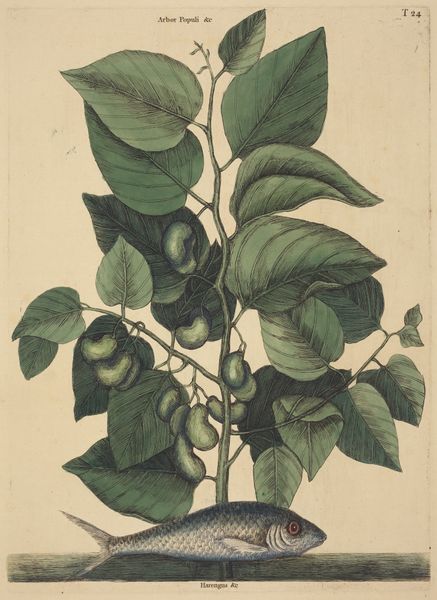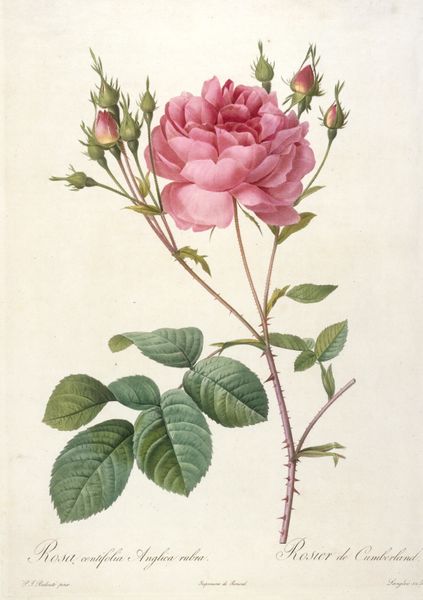
Dimensions: plate: 34.8 x 25.7 cm (13 11/16 x 10 1/8 in.) sheet: 50.6 x 34.6 cm (19 15/16 x 13 5/8 in.)
Copyright: National Gallery of Art: CC0 1.0
Curator: Take a moment to look at this delicate image—"Red Frangipanni," also known as Plumeria rubra. Mark Catesby likely crafted this watercolor and print work between 1731 and 1743. What impressions strike you first? Editor: I'm immediately struck by how gentle yet commanding it is. The frangipani seems both a tender bloom and an assertion of tropical vibrancy. Is this the beginning of Western botanists engaging with the New World flora? Curator: Indeed! Catesby's works are foundational to the European understanding of American flora and fauna. These images became instrumental, weaving new specimens into the grand tapestry of scientific knowledge but also exoticizing faraway lands. What symbolic echoes resonate with you here? Editor: Frangipani, in many cultures, represents both new beginnings and, somewhat paradoxically, death and mourning. In Hindu tradition, it's closely associated with temples, sacred spaces, transcendence and devotion. Did Catesby understand this depth of cultural symbolism, or was his project purely descriptive? Curator: Catesby's aim, first and foremost, was documentation. However, these botanical studies inevitably become charged with the politics and poetics of the colonial gaze. By depicting only this species, he implicitly excludes other forms and narratives of botanical knowledge, directing focus. The very act of naming and classifying reflects this. Editor: So, it's both a celebration of nature and an act of subtle imposition. But the floral details and vibrant color still evoke awe. The plumeria's form, so meticulously captured, transports one. Even through the colonial context, the innate allure shines through. Curator: Absolutely. And this interplay—between the allure of the new world and the structure imposed upon it— is precisely where the dynamism lies. What do you believe visitors should carry with them after viewing this piece? Editor: An awareness of how botanical art and illustrations shape our perception. What we see isn't always just observation; it's shaped by those doing the observing, and why. How about you? Curator: The lingering sense of interconnectedness—how science, art, and colonial histories intertwine, flowering from seemingly simple representations. Each image carries layers waiting to be unfolded.
Comments
No comments
Be the first to comment and join the conversation on the ultimate creative platform.
